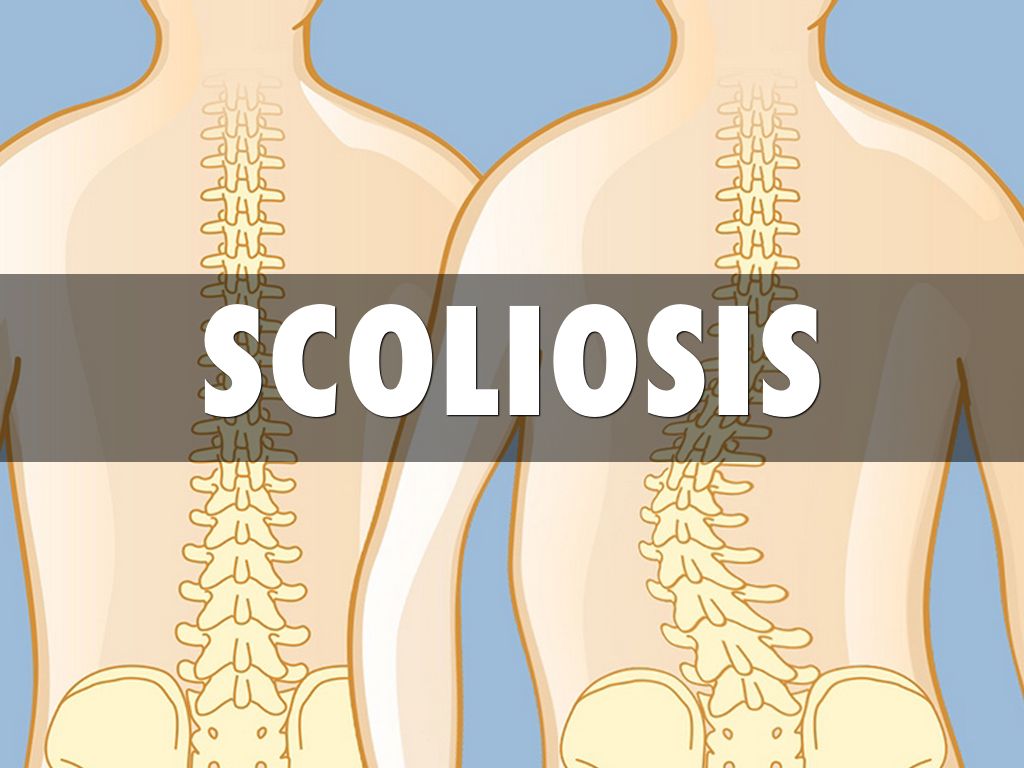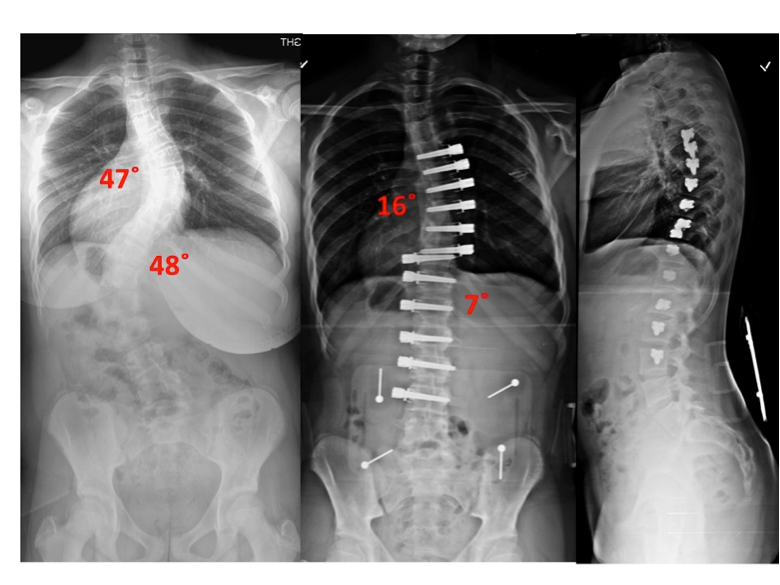Scoliosis is a medical condition characterized by an abnormal curvature of the spine. It can affect people of all ages, but it is most commonly diagnosed during adolescence. In severe cases, scoliosis can cause significant pain, discomfort, and even respiratory problems. While non-surgical treatments such as bracing and physical therapy are often effective in managing mild to moderate cases, surgery may be necessary for those with severe curvature. One common question that arises when considering scoliosis surgery is whether it can make a person taller. In this article, we will explore the effects of scoliosis surgery on body height and alignment, as well as the factors that influence these changes.

Qu'est-ce que la scoliose ?
Scoliosis is a condition that causes the spine to curve sideways, resulting in an “S” or “C” shape. The curvature can occur in different regions of the spine, including the thoracic (upper back), lumbar (lower back), or both. The cause of scoliosis is often unknown, but it can be attributed to factors such as genetics, muscle imbalances, or neuromuscular conditions. Scoliosis can range from mild to severe, with the severity determined by the degree of curvature.

Types of scoliosis surgery
There are several types of scoliosis surgery, each tailored to the individual’s specific needs. The most common surgical procedure for scoliosis is spinal fusion, which involves fusing together two or more vertebrae to correct the curvature. During the surgery, the surgeon may use metal rods, screws, or hooks to hold the spine in place while the fusion occurs. Another surgical option is spinal instrumentation, where metal implants are used to straighten and stabilize the spine. In some cases, a combination of fusion and instrumentation may be used to achieve the desired correction.

Does scoliosis surgery affect body height?
One of the common misconceptions about scoliosis surgery is that it can make a person taller. However, scoliosis surgery does not directly increase a person’s height. The primary goal of scoliosis surgery is to correct the curvature of the spine and prevent further progression. While the surgery may improve the overall alignment of the spine, it does not result in a significant increase in height.
Understanding the goals of scoliosis surgery
The main goal of scoliosis surgery is to halt the progression of the curvature and prevent it from worsening. By correcting the alignment of the spine, surgery can alleviate pain, improve function, and enhance the overall quality of life for individuals with scoliosis. While height increase is not a primary objective of scoliosis surgery, it can indirectly impact a person’s height by improving their posture and spinal alignment.
Factors influencing height changes after scoliosis surgery
Several factors can influence the changes in height after scoliosis surgery. Firstly, the severity of the curvature plays a significant role. Individuals with severe scoliosis may experience a greater improvement in height after surgery compared to those with milder curves. Additionally, the age at which surgery is performed can also affect the potential for height changes. Younger individuals who undergo surgery before their growth plates have closed may experience more significant height gains compared to adults whose growth plates have already fused.
Furthermore, the surgical technique used can impact the height changes. Spinal fusion surgery, which involves fusing the vertebrae together, may result in a slight reduction in height due to the elimination of the natural curvature of the spine. On the other hand, spinal instrumentation surgery, which uses metal implants to straighten the spine, may have a minimal impact on height.
How does scoliosis surgery impact spinal alignment?
Scoliosis surgery aims to correct the abnormal curvature of the spine and restore a more natural alignment. By fusing or instrumenting the vertebrae, the surgeon can straighten the spine and improve its overall alignment. This can lead to a more balanced posture and improved body symmetry. While the surgery may not directly increase height, it can create the illusion of being taller by improving the alignment of the spine.
Risks and complications associated with scoliosis surgery
Like any surgical procedure, scoliosis surgery carries certain risks and potential complications. These can include infection, bleeding, nerve damage, blood clots, and adverse reactions to anesthesia. Additionally, there is a risk of implant failure or loosening, which may require revision surgery. It is essential for individuals considering scoliosis surgery to discuss these risks with their surgeon and weigh them against the potential benefits.
Post-surgery rehabilitation and recovery
After scoliosis surgery, a comprehensive rehabilitation program is crucial for a successful recovery. Physical therapy plays a vital role in restoring strength, flexibility, and mobility. The rehabilitation program typically includes exercises to improve core stability, posture, and overall body alignment. It is important for patients to follow their rehabilitation plan diligently to optimize their recovery and achieve the best possible outcomes.
Long-term effects of scoliosis surgery on height and alignment
In the long term, scoliosis surgery can have a positive impact on height and alignment. While the surgery itself may not directly increase height, it can improve posture and spinal alignment, which can create the illusion of being taller. Additionally, by correcting the curvature of the spine, surgery can prevent further progression and minimize the risk of future complications. Regular follow-up appointments with the surgeon are essential to monitor the long-term effects of scoliosis surgery and address any concerns that may arise.
Alternative treatments for scoliosis
While surgery is often necessary for severe cases of scoliosis, there are alternative treatments available for individuals with milder curvature. Non-surgical options such as bracing and physical therapy can be effective in managing and slowing down the progression of scoliosis. Bracing involves wearing a specialized brace that helps to straighten the spine and prevent further curvature. Physical therapy focuses on strengthening the muscles surrounding the spine and improving posture and body alignment. These conservative treatments can be beneficial for individuals who are not surgical candidates or prefer to explore non-invasive options.
Conclusion
Scoliosis surgery does not directly make a person taller, but it can improve posture and spinal alignment, which may create the illusion of being taller. The primary goal of scoliosis surgery is to correct the curvature of the spine and prevent further progression. Factors such as the severity of the curvature, age at surgery, and surgical technique can influence the potential for height changes. While scoliosis surgery carries certain risks and potential complications, it can have long-term positive effects on height and alignment. It is important for individuals considering scoliosis surgery to consult with their healthcare provider to determine the most appropriate treatment plan based on their specific needs and circumstances.
Références
- Weinstein SL, Dolan LA, Cheng JC, et al. "Adolescent idiopathic scoliosis". Lancet. 2008;371(9623):1527-1537. doi: 10.1016/S0140-6736(08)60658-3.
- Negrini S, Donzelli S, Aulisa AG, et al. "2016 SOSORT guidelines : Traitement orthopédique et de rééducation de la scoliose idiopathique pendant la croissance." Scoliose et troubles de la colonne vertébrale. 2018;13:3. doi : 10.1186/s13013-018-0175-8.
- Trobisch P, Suess O, Schwab F. "Scoliose idiopathique". Dtsch Arztebl Int. 2010;107(49):875-883. doi : 10.3238/arztebl.2010.0875.
- Hresko MT. "Pratique clinique. Scoliose idiopathique chez les adolescents". N Engl J Med. 2013;368(9):834-841. doi : 10.1056/NEJMcp1209063.
- Bettany-Saltikov J, Weiss HR, Chockalingam N, et al. "Surgical versus non-surgical interventions in people with adolescent idiopathic scoliosis". Cochrane Database Syst Rev. 2015;2015(4). doi: 10.1002/14651858.CD010663.pub2.
- Negrini S, Minozzi S, Donzelli S, et al. “Bracing for idiopathic scoliosis in adolescents.” Cochrane Database Syst Rev. 2015;2015(9). doi: 10.1002/14651858.CD006850.pub2.
- Newton PO, Riddick MF, McMillan R, et al. “Growth and curve progression following anterior spinal fusion for idiopathic scoliosis.” Colonne vertébrale. 2014;39(13):1090-1096. doi: 10.1097/BRS.0000000000000288.
- Mac-Thiong JM, Labelle H, de Guise J, et al. “The impact of scoliosis surgery on health-related quality of life in adolescents.” Colonne vertébrale. 2012;37(7). doi: 10.1097/BRS.0b013e31822cfa9a.
- Le Huec JC, Aunoble S, de Gauzy JS, et al. “Surgical treatment of idiopathic scoliosis.” Orthop Traumatol Surg Res. 2012;98(2):195-202. doi: 10.1016/j.otsr.2011.10.001.

